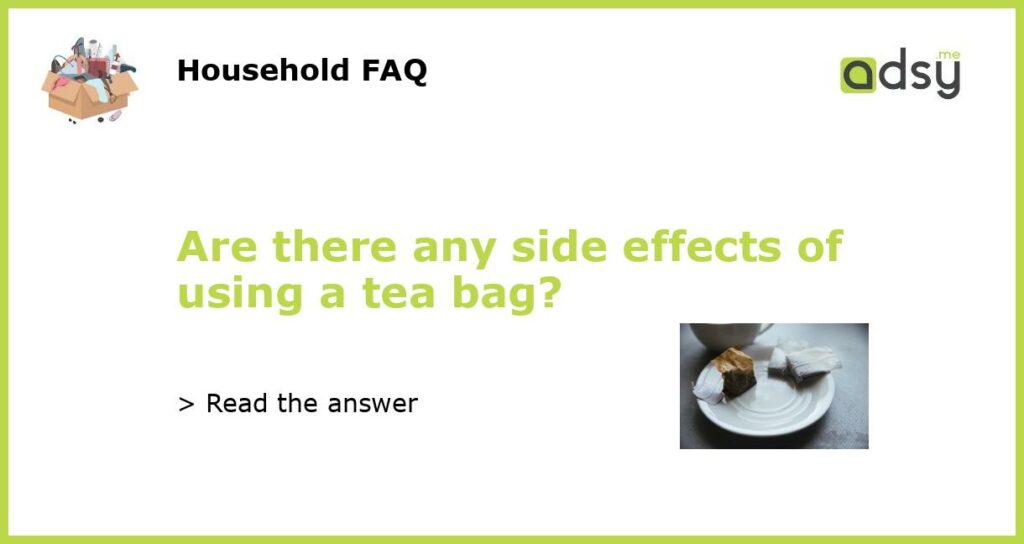Tea Bags: A Popular Choice for Convenient Brewing
Tea bags have become a popular choice for brewing tea due to their convenience and ease of use. With just a simple dip in hot water, you can enjoy a flavorful cup of tea without the hassle of loose leaves or strainers. However, many people wonder if there are any side effects of using a tea bag.
The Composition of Tea Bags
Tea bags typically consist of a small porous bag, often made from filter paper or food-grade plastic, filled with tea leaves or herbs. The most common types of tea found in tea bags include black tea, green tea, and herbal tea blends. These tea leaves are usually finely chopped or ground to allow for quick brewing and easy extraction of flavors.
Potential Side Effects of Using Tea Bags
While tea bags are generally safe to use, there are a few potential side effects to be aware of:
1. Reduced Health Benefits: Tea bags may contain lower-quality tea leaves compared to loose tea. This can result in a lower concentration of beneficial compounds such as antioxidants and polyphenols, which are known for their potential health benefits.
2. Tea Bag Materials: Some tea bags are made using non-biodegradable materials, such as nylon or polypropylene. When these tea bags are disposed of, they can contribute to plastic waste and pollution. Opting for biodegradable or compostable tea bags can help minimize the environmental impact.
3. Potential Chemical Contaminants: Tea bags may be treated with chemicals, such as epichlorohydrin, to enhance their strength and prevent tearing. While the amount of these chemicals is generally considered safe, some people may be sensitive to them or prefer to avoid any potential exposure.
Precautions to Minimize Side Effects
To minimize any potential side effects of using tea bags, consider the following precautions:
1. Choose High-Quality Tea Bags: Look for tea bags made from high-quality tea leaves to ensure you are getting the maximum flavor and potential health benefits. Check the packaging for information on the type and origin of the tea.
2. Opt for Organic Tea Bags: Organic tea bags are produced without the use of synthetic pesticides or herbicides, reducing the risk of chemical contamination. Look for certified organic teas to ensure you are making a more conscious choice.
3. Avoid Tea Bags with Non-Biodegradable Materials: Look for tea bags made from biodegradable materials, such as paper or plant-based fibers. These tea bags can be composted or easily broken down, minimizing their impact on the environment.
Exploring Alternatives to Tea Bags
If you prefer to avoid any potential side effects associated with tea bags, there are alternative methods for brewing tea:
1. Loose Leaf Tea: Brew loose leaf tea using a tea infuser or strainer. This allows for better control over the quality and quantity of tea used, resulting in a more personalized brewing experience.
2. Tea Sachets: Tea sachets, also known as tea pyramids, are larger bags that contain whole tea leaves. These sachets allow for better water circulation and enhance the infusion process, resulting in a fuller flavor profile.
3. Tea Balls or Infusers: Use a tea ball or infuser to contain loose tea leaves while allowing them to expand and release flavors. These devices can be reused and offer flexibility in the amount of tea used.
In conclusion, tea bags are a convenient option for brewing tea, but they may have some potential side effects. To minimize these effects, choose high-quality, organic tea bags made from biodegradable materials. Additionally, exploring alternative brewing methods like loose leaf tea or tea sachets can provide a more personalized and environmentally friendly tea experience.






